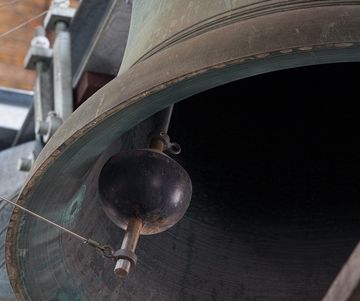
What is the carillon?

The carillon of St. Rombout’s Cathedral is 80 meters above ground - © Stad Mechelen
A carillon is a concert instrument made of bronze bells that are played from a keyboard. The keyboard and bells are typically situated high up in bell towers, their sound soaring over the surrounding area, carrying over long distances.
Richard de Waardt plays Radiohead’s “Daydreaming”
Carillons are found around the world in city squares and parks, public spaces, town halls, belfries, churches and university campuses.
The player, called a carillonneur or carillonist, plays a variety of music—popular hits, classical music, music composed especially for the carillon, folk songs and national anthems. With skilful control of the keys and pedals, the carillonneur can achieve evocative sounds and great expressiveness.
A carillon has at least 23 bells of different sizes that are tuned chromatically. Each bell produces a different tone and is played from a keyboard with an arrangement of keys similar to the black and white keys of a piano.

The bells do not swing; they are struck by a clapper which is fixed closely to the inside edge of the bell. The clapper is controlled from the keyboard by a series of wires, which the player can control for colour and volume.
Carillons vary in size, ranging from 23 to 77 bells, but the standard size is 49 bells. High-sounding bells are light, weighing as little as six kilograms, while low bells can be very heavy, up to 12 tons. The low bells are played with the feet on pedals for greater control and power.
Photo: the clapper is fixed close to the inside edge of the bell (Photo: Andreas Dill)